After the Thin Man

Brief Synopsis
Cast & Crew
W. S. Van Dyke
William Powell
Myrna Loy
James Stewart
Elissa Landi
Joseph Calleia
Film Details
Technical Specs

Synopsis
On New Year's Eve, Nick and Nora Charles arrive back home in San Francisco after Nick successfully solved the "Thin Man" murder case in New York. Exhausted from their trip, Nick and Nora want a quiet evening at home, but discover that their house has been taken over by a group of revelers they don't even know. When Nora's Great Aunt Katherine Forrest invites them to dinner, Nick doesn't want to go, but agrees when Nora's cousin, Selma Landis, pleads with Nora. At Katherine's house, they discover that Selma's husband Robert has been missing for three days. Katherine asks Nick to quietly find Robert, and, although he is reluctant, he takes Nora to the Lichee, a Chinese nightclub that Robert frequents. Robert has been at the Lichee, drinking and waiting for the club's entertainer, Polly Byrnes. Polly and "Dancer," one of the club's owners, are expecting to get money from Robert and Dancer tells Polly to take Robert home. A few days previously, Robert had approached David Graham, Selma's former fiancée, for $25,000 to leave for good. David meets Robert a short time later to give him negotiable bonds, then, after cruelly bidding Selma goodbye, Robert walks out into the fog and is shot. When David's car drives up to Robert's body, Selma is standing over it with a gun. Dazed, Selma gives David the weapon and he tells her not to say anything. Despite their efforts to protect Selma, Nick and Nora are unable to prevent her arrest by Lieutenant Abrams. Though Selma says that she had not fired her gun, David reveals that he threw it into the bay, thinking that Selma actually had killed her husband. The next day, Nick goes to the hotel room of Phil Byrnes, a man posing as Polly's brother, but actually her husband. Upon his arrival, Nick discovers Phil's dead body. Later, he also discovers that someone had been listening to Polly's apartment through a device in the apartment above. Suspicious when he hears Dancer enter Polly's apartment, Nick follows him to the basement and finds the body of the janitor. When Nora arrives at the apartment building and hears the janitor's name, Pedro, she reveals that Pedro used to be her father's gardener. Nick then asks Abrams to have all of the suspects congregate at Polly's. Though Dancer and Polly admit their plan to use a check forged with Robert's name, each claims to be innocent of the murders. During questioning, David says that he remembers Pedro, a man with a long white moustache, but hasn't seen him recently. When Nick looks at a picture of Pedro taken years before and sees that Pedro then had a small black moustache, he knows that David must be lying. Nick then says that the murderer has finally made a slip and reconstructs the evidence to reveal that David killed Robert out of revenge, then killed Phil when Phil tried to blackmail him. Finally, when Pedro recognized him, David was forced to kill him as well. Now cornered, David reveals that he had been planning to frame Selma for her husbands murder. He draws a gun and threatens to shoot Selma and then himself, but Lum Kee, Dancer's partner in the club, knocks the gun out of David's hand and David is overpowered. A short time later, Nick and Nora leave San Francisco on the train, accompanied by Selma, who plans to start a new life. Finally, when he is alone with Nora, Nick sees that she is crocheting a baby's sock and is shocked when she says "And you call yourself a detective."

Director
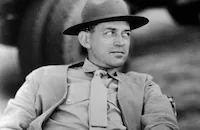
W. S. Van Dyke
Cast

William Powell

Myrna Loy

James Stewart

Elissa Landi

Joseph Calleia

Jessie Ralph
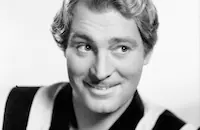
Alan Marshall
Teddy Hart

Sam Levene

Dorothy Mcnulty
William Law

George Zucco

Paul Fix
Asta
Mrs. Asta
Dorothy Vaughn
Maude Turner Gordon
William Burress
Tom Ricketts
Joe Caits
Joe Phillips
Edith Kingdon
John T. Murray
John Kelly

Clarence Kolb
Zeffie Tilbury
Donald Briggs
Jack Norton
Fredric Santly
Baldwin Cooke
Sherry Hall
Jack Raymond
Ed Dearing
Dick Rush
Mary Gordon
Heinie Conklin
Dick Cramer
Ben Hall
George H. Reed
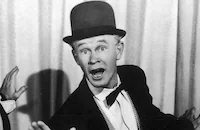
Billy Benedict

Vince Barnett
Ethel Jackson

Arthur Housman
Jack Daley
Bert Scott
George Guhl
Norman Willis
Edith Craig
Kewpie Martin
Bert Lindley
James Blaine
Guy Usher
Bob Murphy
Harry Tyler
Bobby Watson
Eric Wilton
Henry Roquemore
Constantine Romanoff
Sam Mcdaniel
Ernie Alexander
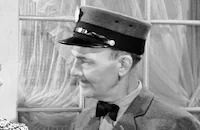
John Butler
Louis Natheaux

Jonathan Hale
Jeanie Roberts
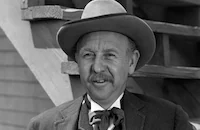
Charles Arnt
Harvey Perry
Jesse Graves
Alice H. Smith
Richard Powell
Cecil Elliott
Phillis Coghlan

Frank Otto
Jack Adair
Irene Coleman
Claire Rochelle
Jean Barry
Jane Tallant
Sue Moore
Edith Trivers
George Taylor

Lee Phelps
Chester Gan

Richard Loo
Lew Harvey
Jimmy Brewster
Harlan Briggs
Jimmy Blair
Marion Shelton
William Gould
Monte Vandergrift
Jimmy Lucas
Crew
Nacio Herb Brown
Eddie Croninworth
Walter Donaldson
Charles Dorian
Seymour Felix
Chet Forrest
Arthur Freed
Cedric Gibbons
Frances Goodrich
Albert Hackett
Dashiell Hammett
Robert J. Kern
Oliver T. Marsh
Harry Mcafee
Douglas Shearer
Herbert Stothart
Hunt Stromberg
Dolly Tree
Edward Ward
Edwin B. Willis
Bob Wright

Photo Collections
Videos
Movie Clip



Trailer
Hosted Intro



Film Details
Technical Specs

Award Nominations
Best Writing, Screenplay
Articles
After the Thin Man
As the sequel to the The Thin Man (1934), After the Thin Man had a much bigger budget than its predecessor. MGM realized what a winning combination it had with Powell and Loy and planned to make the most of it. Once again, Nick and Nora fall into a case, though Nora swears upon their return to San Francisco that Nick is done with all that. Her cousin Selma, played by Elissa Landi (The Sign of the Cross, 1932), hires Nick to find her carousing husband, who has been having an affair with a nightclub singer. But the husband's murdered and Selma becomes a suspect. [SPOILER ALERT] It turns out that nice guy Jimmy Stewart, cast as Selma's ex-boyfriend David, is actually the killer, and it's fun to see him play the gleeful psychopath with the conviction he brings to all his roles: "I did it, do you hear, and I'm glad, glad, GLAD!"
The Thin Man production team returned in force for this sequel, including director W.S. Van Dyke; screenwriters Frances Goodrich and Albert Hackett, who won an Oscar nomination for the film; and Dashiell Hammett, who wrote an original story for it. In her book Being and Becoming, co-written with James Kotsilibas-Davis, Loy recalls a memorable evening with the famous detective writer: "Hammett was an attractive kind of angular man, compelling and rather like the operatives of his stories. He told me that he'd fashioned Nora after his friend Lillian Hellman, which I found interesting....As we talked that evening, Dash drank heavily and began turning a little green. He went on and on about Lillian, while aiming overt passes at me, lunging and pawing, with my lover beside us....Dash could be intransigent, but, by God, they got him downstairs and sent him home in a studio car. That was a great disappointment to me, because I really wanted to talk to the man. I never got the chance again -- Metro let him go soon after that. Apparently he couldn't handle the job."
The Thin Man series was the best thing that ever happened to its leading actors. Playing vamps and assorted exotica for 80 roles, Loy finally got the type of part she knew she was made for when offered the role of Nora Charles for the first Thin Man picture.
After a run on the stage, Powell began his film career, like Loy, playing various unsavory characters. At the end of a successful run at Warner Bros., including a series of films as another detective -- Philo Vance -- Powell's career began to wane. He made the move to MGM in 1934 and did Manhattan Melodrama, which also featured Loy. Director Woody Van Dyke immediately picked up on the chemistry between the two and the duo were next cast in the roles that would make them superstars.
By 1936 Loy had been voted "Queen of the Movies" by box-office exhibitors, but following the first Thin Man she had to play hardball with MGM to meet her contract requirements. Her Thin Man salary was reportedly half of the $3,000 a week earned by Powell and she felt that if the studio publicized the two as a team, they should pay them accordingly. Loy held out and L.B. Mayer finally relented -- a record event in the history of a man well known for his threats and tricks to get his own way.
After much internal debate, it was decided to call the sequel After the Thin Man, which didn't make much sense because the "thin man" in Dashiell Hammett's original story is the murder victim. But after Powell's brilliant performance in the first film, audiences couldn't separate him from the film's namesake character. Likewise, audiences had trouble separating fact from fiction when it came to Powell and Loy's relationship. Though the two were very close friends offscreen, their only romantic moments together occurred on-screen. The public, however, was determined to have them married in private life as well. When the two stars showed up in San Francisco (where most of After the Thin Man was shot) at the St. Francis, the hotel management proudly showed "Mr. and Mrs. Powell" to their deluxe suite. This was an especially uncomfortable moment as Jean Harlow, who was engaged to Powell, was with them, and the couple had not made a public statement about their relationship. Harlow saved the day by insisting on sharing the suite with Loy: "That mix-up brought me one of my most cherished friendships," Loy said in Being and Becoming. "You would have thought Jean and I were in boarding school we had so much fun. We'd stay up half the night talking and sipping gin, sometimes laughing, sometimes discussing more serious things." Meanwhile, Powell got the hotel's one remaining room -- a far humbler accommodation downstairs.
The film's bigger budget also meant a more reasonable shooting schedule, considering that the first Thin Man was shot in 16 days! Overall, shooting in San Francisco was rigorous but celebratory, according to Loy: "We worked terribly hard on that San Francisco location. We shot all over town, with about sixty principals and crew and hundreds of local extras; but Woody Van Dyke always liked a festive company, so there were lots of parties." Loy also recalled that Jimmy Stewart "was very excited and enthusiastic about it all, rushing around with his camera taking pictures of everybody on the set, declaring, 'I'm going to marry Myrna Loy!'"
A stellar supporting cast was pulled in for the sequel as well. In addition to Landi and Stewart, Dorothy McNulty (who later went by the name Penny Singleton) is featured as the film's vamp. In the years following After the Thin Man, she went on to greater success as Blondie in the Dagwood and Blondie films and as the voice of Jane Jetson in the animated series.
Producer: Hunt Stromberg
Director: W. S. Van Dyke II
Screenplay: Frances Goodrich, Albert Hackett, Dashiell Hammett (story)
Cinematography: Oliver T. Marsh
Film Editing: Robert Kern
Art Direction: Cedric Gibbons
Music: Nacio Herb Brown, Walter Donaldson, Herbert Stothart, Edward Ward
Principal Cast: William Powell (Nick Charles), Myrna Loy (Nora Charles), James Stewart (David Graham), Elissa Landi (Selma Landis), Joseph Calleia (Dancer), Jessie Ralph (Aunt Katherine Forrest).
BW-113m. Closed captioning.
by Emily Soares

After the Thin Man
After the Thin Man on DVD
Although made in 1937, three years after its predecessor, After the Thin Man picks up just where the first left off - with former detective Nick and socialite wife Nora on the train back to San Francisco after solving a case while on vacation in New York. Like most sequels, After the Thin Man doesn't mess with the formula that made the original work. With W.S. Van Dyke again directing and Frances Goodrich and Albert Hackett again scripting, that means lots of drinking, lots of good-natured bantering between the Charleses, a string of murders, a boatload of colorful mugs for suspects and a climax in which Nick gathers all those suspects together and figures out which one is guilty.
This is both a good thing and a bad thing. You won't get any surprises from After the Thin Man, but you do get another heaping helping of the priceless chemistry of Powell and Loy, who made a dozen together and have never been more charming than as the quip-ready Charleses. Once Nick and Nora get off the train in Frisco, they are once again pulled into intrigue. This time, it's Nora's distraught cousin Selma (Elissa Landi) who's in need of help. Her ne'er-do-well husband (Alan Marshall) has been acting up again, and hasn't been around for a few days, filling Selma with worry. Naturally, Nick and Nora have no trouble finding him, but not until after a very memorable sequence in which Nick encounters the snooty women and decrepit old men who are Nora's aunts and uncles. You'd get sloshed, too, if you had to be around them.
Most of the subsequent intrigue involves the shady husband. He's offered to leave Selma if the man she almost married (Stewart) will give him $25,000 to go away, but the nightclub where he does his drinking is full of petty crooks ready to prey on him once he gets the money. If it's not the singer who's wrapping him around her finger (played by Dorothy McNulty, who later, as Penny Singleton, played Blondie in a gazillion B-comedies and supplied Jane Jetson's voice), it's either one of the club owners (Joseph Calleia, William Law) or her opportunistic brother (Paul Fix). When the husband gets shot and the money isn't taken, the evidence points towards Selma, which pulls reluctant Nick and eager Nora even deeper into the homicide case.
As always, the fun is not so much in the whodunit as it is in the well-to-do (and well-lubricated) couple rubbing shoulders with the criminal underbelly, getting into dangerous situations and, as much as they can, making each other squirm. That's why at the start the lengthy series is more romantic comedy than mystery. One slight change in the sequel's romantic-comedy sensibility is a drop in the sex appeal between Nick and Nora. The first movie was made in the production-code cusp year of 1934, and ends with the couple clearly about to have sex, giving trusty fox terrier Asta the upper train berth while they share the lower. So it's a drag to see them neutered somewhat by standard-issue production-code double beds in After the Thin Man. But debonair Powell and game Loy still have more chemistry than almost all 1930s screen couples - and they have more fun than almost any other, too.
The After the Thin Man DVD benefits from the inclusion of How to Be a Detective, one of Robert Benchley's wryest MGM comedy shorts and an apt bonus to put here. Pulling a page from the Criterion Collection's playbook, Warner Home Video has also added a 1940 Lux Radio Theatre version of the movie, in which Powell and Loy reprise their roles. This is another generous, well-organized disc from WHV.
For more information about After the Thin Man, visit Warner Video. To order The Thin Man Collection (individual titles in the set are not available separately), go to TCM Shopping.
by Paul Sherman
After the Thin Man on DVD
Quotes
Come on. Let's get something to eat. I'm thirsty.- Nick Charles
You see, when it comes to words like that, an illiterate person--- Nick Charles
Whaddaya mean "illiterate"? My father and mother were married right here in the city hall!- Polly Byrnes
Trivia
Notes
According to contemporary news items, portions of the film were shot on location in San Francisco, and the base of the city's Coit Tower was used as the exterior of the Charles home. According to a news item in Hollywood Reporter on October 30, 1934, author Dashiell Hammett was to have a small part in the picture, however, when the film went into production almost two years later, his name was not mentioned and the possibility of his acting in the picture was apparently dropped. The nightclub featured in the film was loosely modelled on the famous Forbidden City, a popular San Francisco night spot from the late 1930s through the 1950s.
This was the first film in more than five years made by actress Dorothy McNulty, who had been appearing on Broadway during the early 1930s. She changed her name in 1938 to Penny Singleton, and became more familiar under that name when she played the lead in Columbia's Blondie series (see below). A modern source credits Henry Grace with set decoration. This was the second of M-G-M's Thin Man pictures. For additional information on the series, please consult the Series Index and see the entry for The Thin Man in AFI Catalog of Feature Films, 1931-40; F3.4572.

Miscellaneous Notes
Released in United States 1936
Released in United States on Video January 26, 1988
Released in United States March 1979
Released in United States 1936
Released in United States on Video January 26, 1988
Released in United States March 1979 (Shown at FILMEX: Los Angeles International Film Exposition (The 50-Hour Mighty MovieMarathon: Mystery and Suspense) March 14-30, 1979.)














